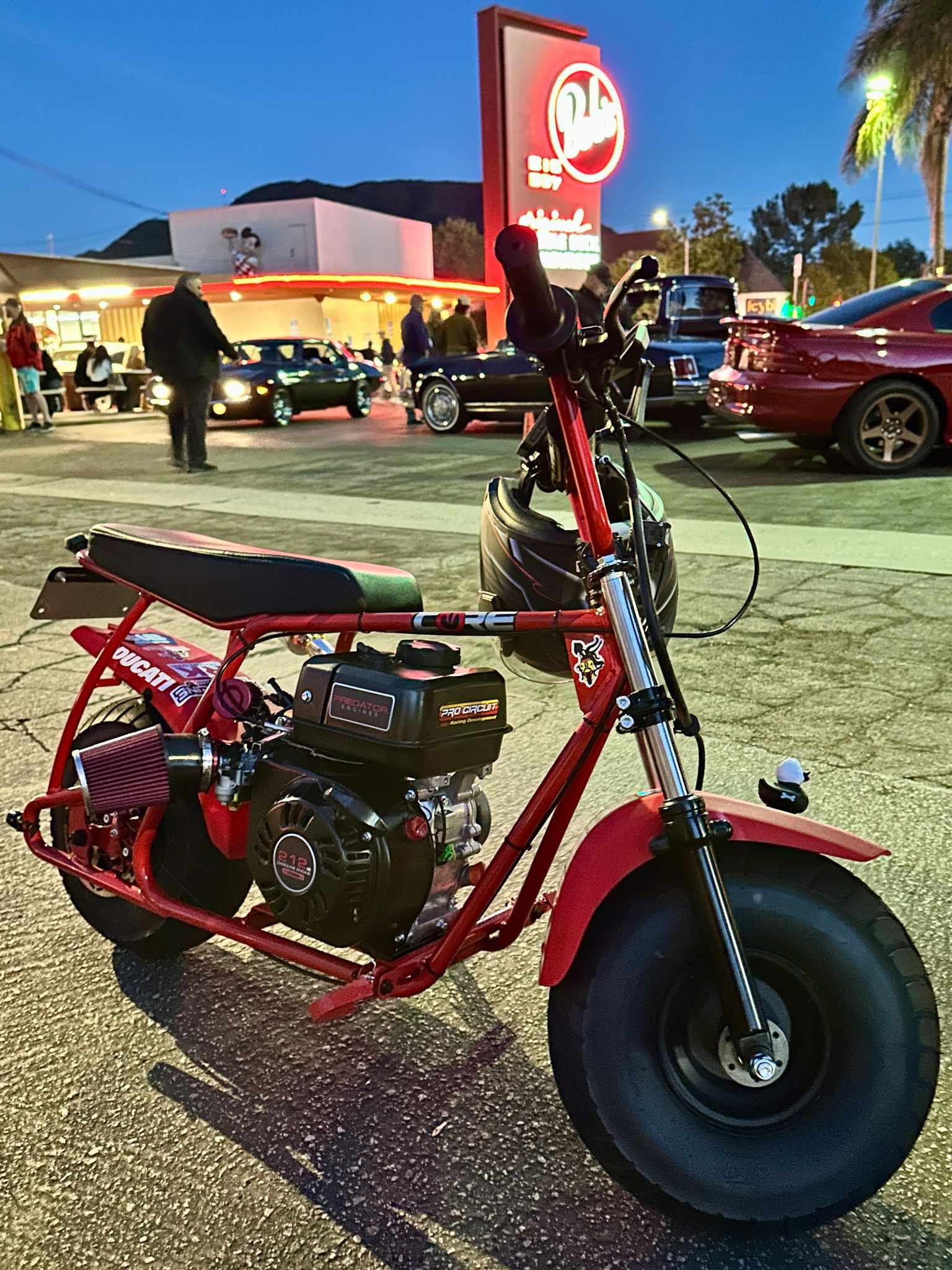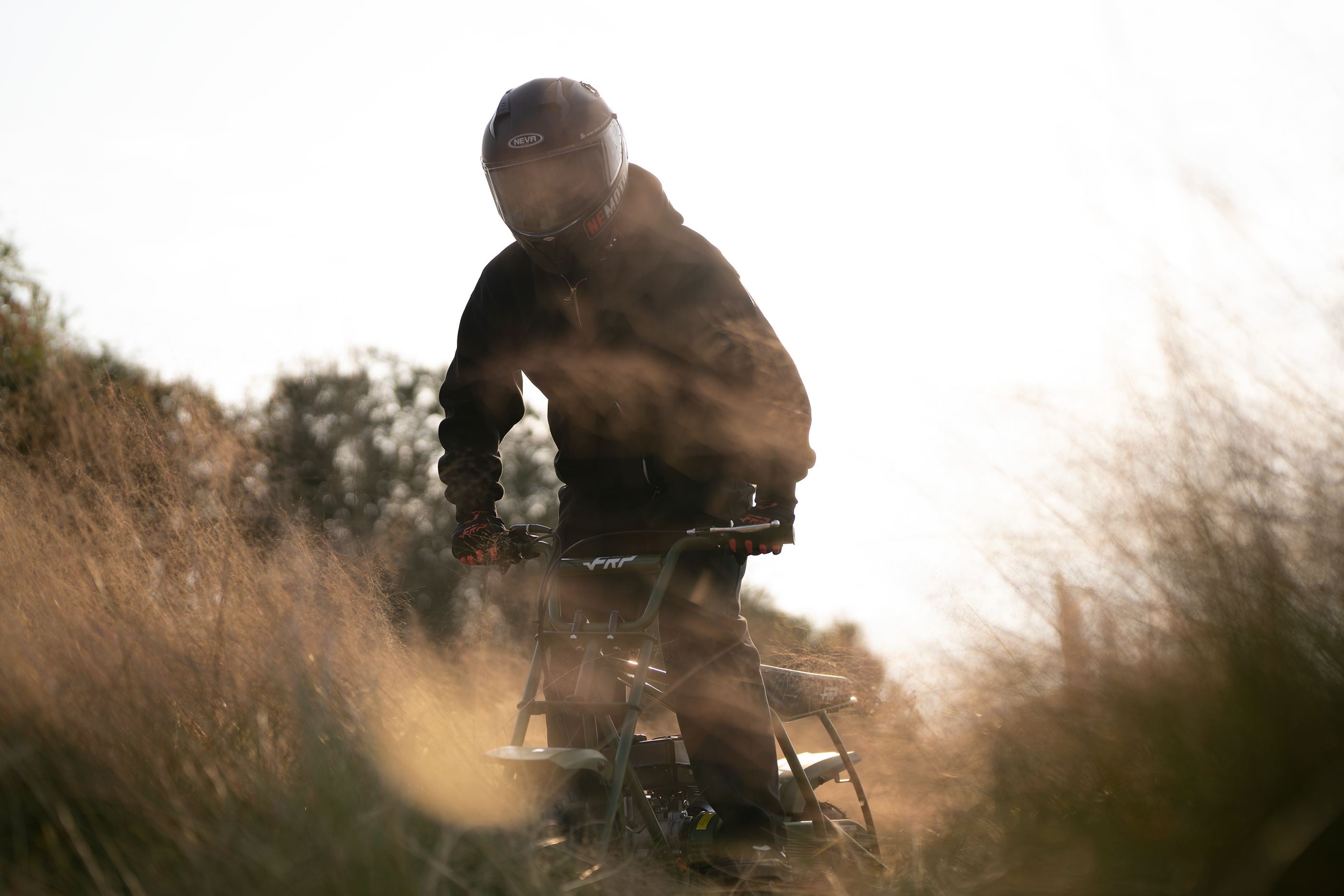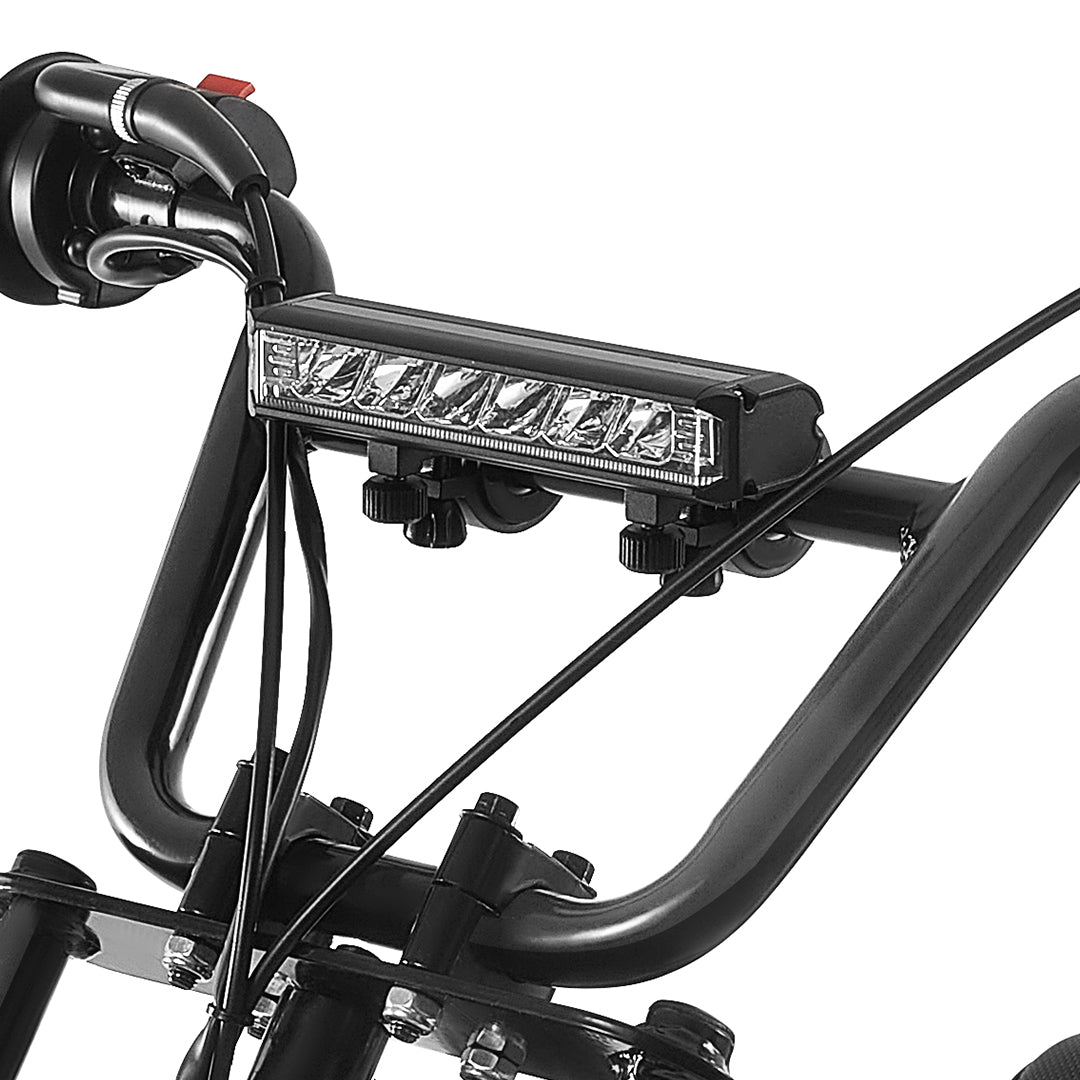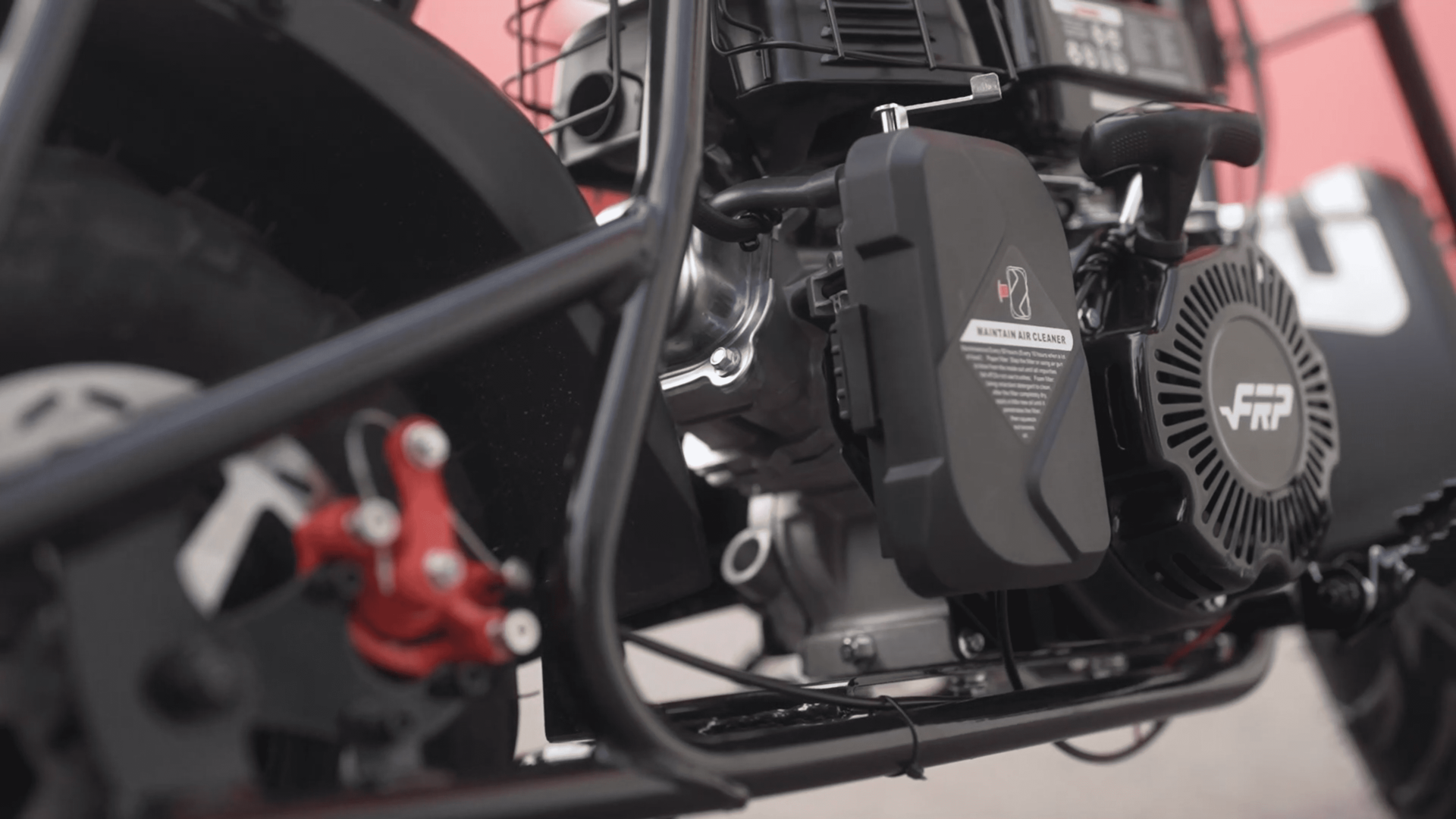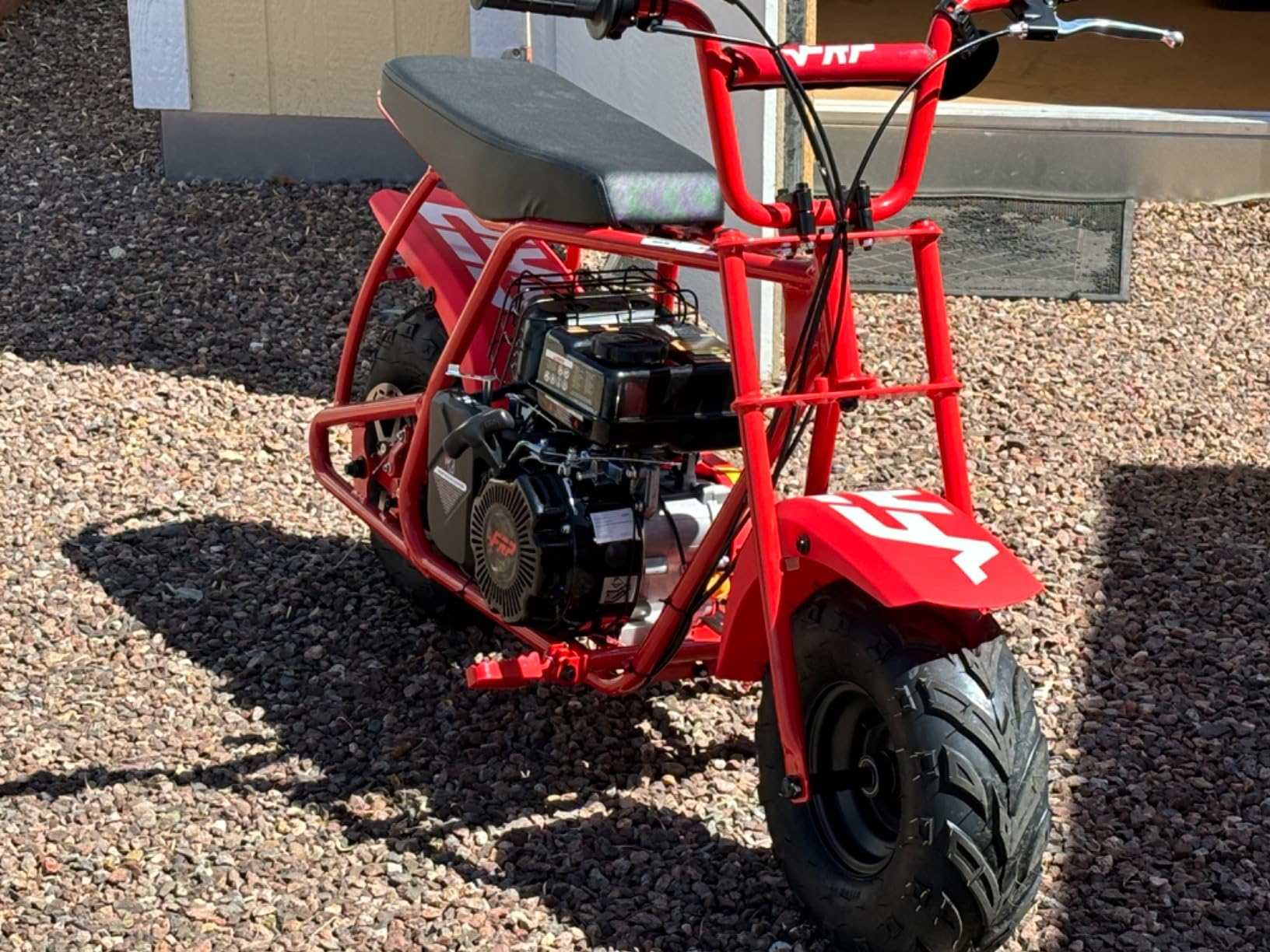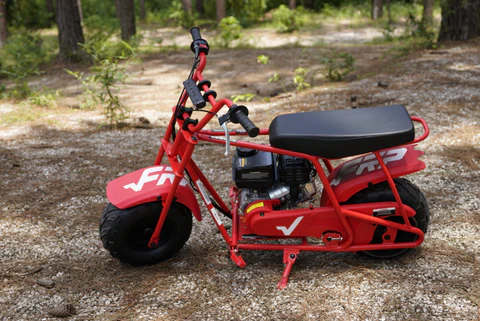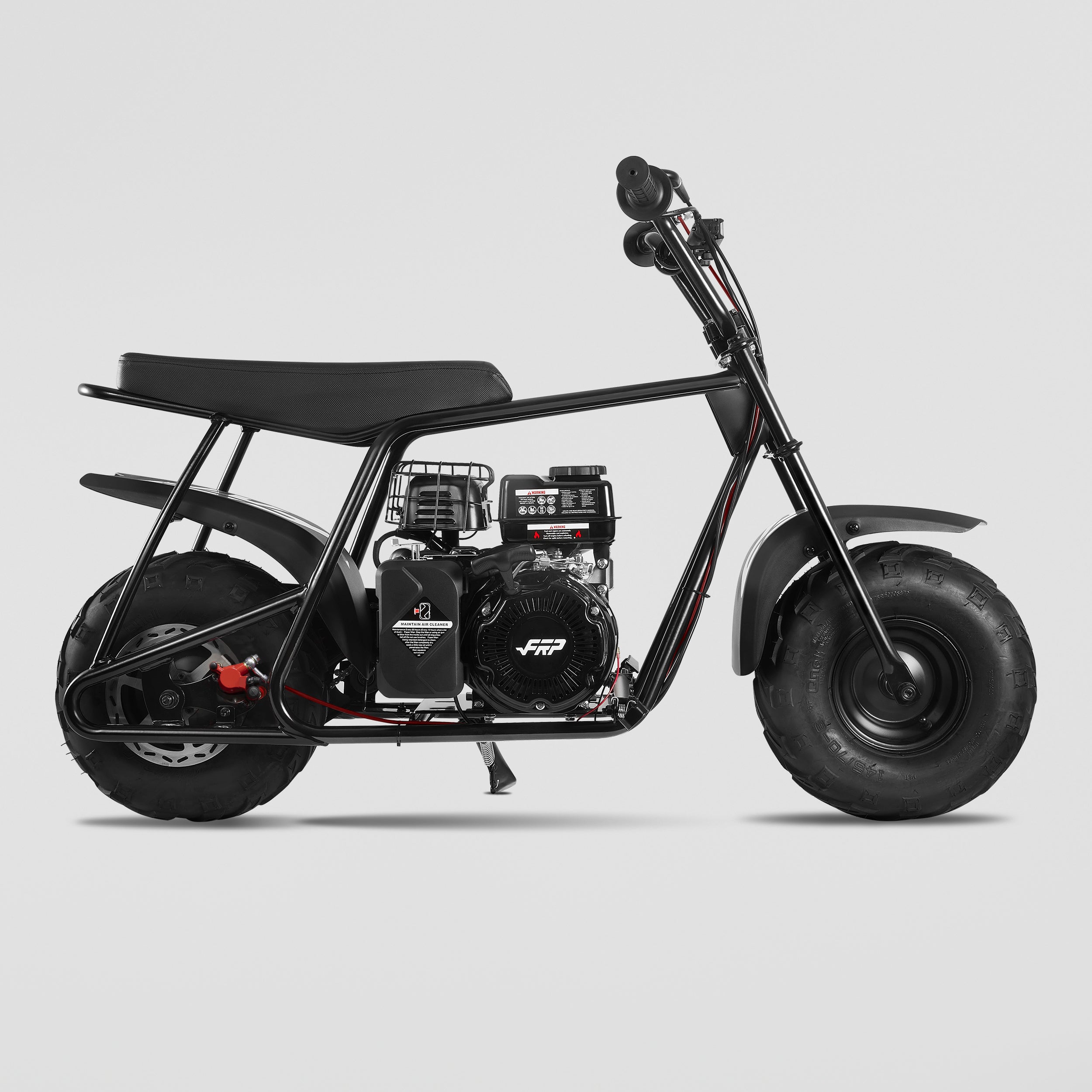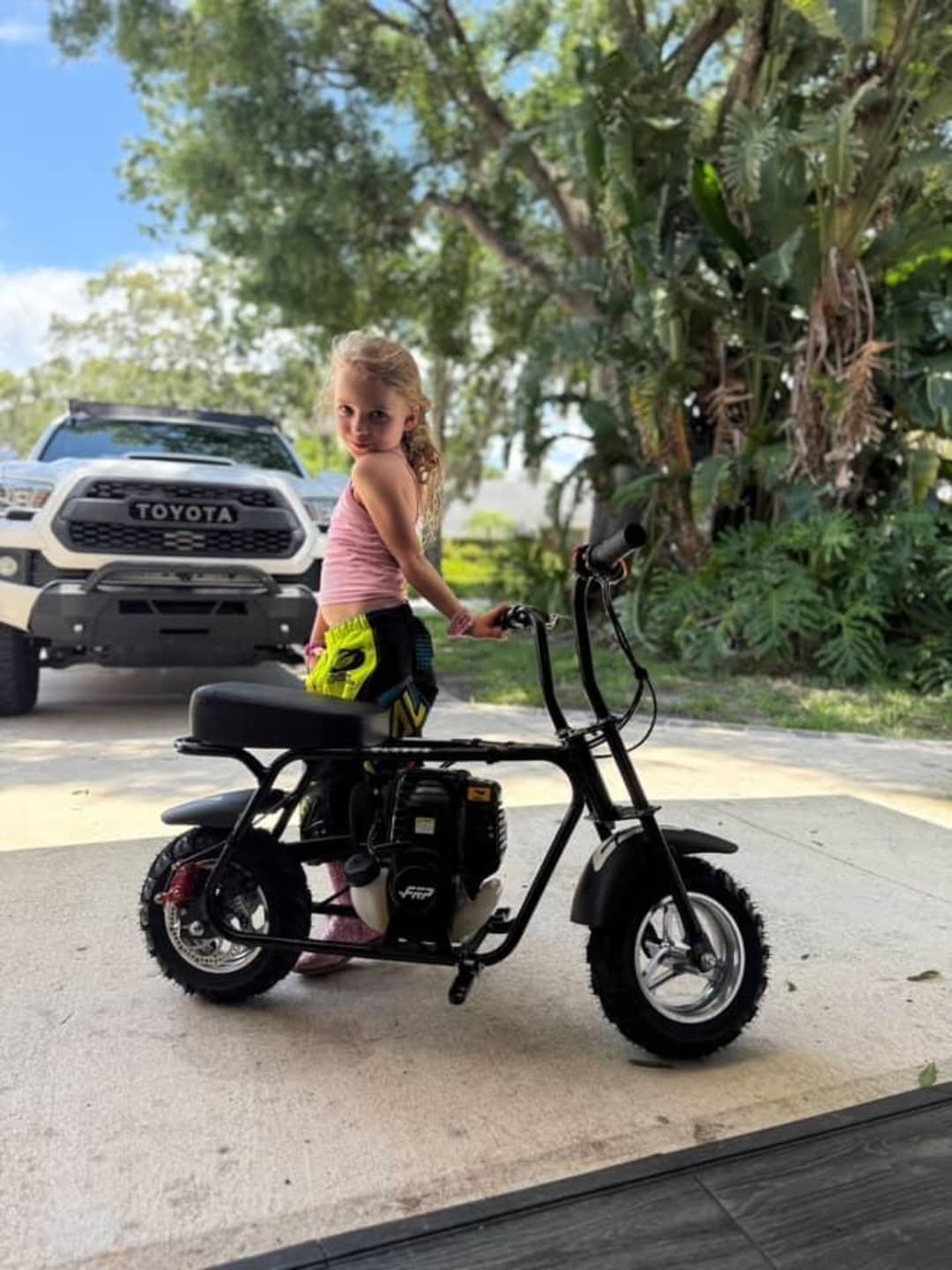If you’ve been looking for ways to wake up your GMB100 mini bike — or wondering whether the Predator 212 swap is really worth it — this community-style guide breaks down the upgrade journey step by step. It’s based on real riders’ and builders’ experiences: what works, what doesn’t, and what to expect at each stage.
No hype. Just what riders are actually doing with their GMB100s.
Stage 1: Know Your Baseline (Stock Setup)

- Engine: 99cc 4-stroke OHV
- Top Speed: around 24 mph (varies by rider weight and terrain)
- Fuel Tank: 0.36 gal (about 30 miles per tank)
- Max Weight: 220 lbs
- Transmission: chain drive with dry centrifugal clutch — beginner-friendly
Many experienced riders suggest logging around 10 hours on the stock setup to develop throttle control, balance, and braking instincts before pursuing more power.
Stage 2: Light Mods First (Low Cost, Big Feel)
- High-flow air filter + carb jet kit → quicker throttle response
- Freer-flowing exhaust → better breathing, cleaner sound
- Sprocket ratio change → trade some top speed for more torque, or vice versa
- Throttle-stop screw → useful for younger or newer riders
Many riders in the minibike community run setups like 12T/40T, which trade a bit of top speed for stronger low-end torque and safer control for beginners.
Stage 3: Intermediate Mods (Stretching the 99cc Engine)
- 19mm “Mikuni-style” carb → smoother throttle and stronger mid-range
- NGK plug + performance clutch → cleaner ignition and quicker engagement
- Torque converter (TAV) → way better acceleration and hill climbing
- Header/exhaust upgrade → helps the 99cc breathe better at higher RPM
Done right, this can unlock roughly 30–40% more usable power while maintaining the stock motor's reliability.
Stage 4: Predator 212 Swap (The “Final Form”)

On Reddit and YouTube, the Predator 212 swap is often called the “final form” of many GMB100 builds. Twice the power, tons of aftermarket support, and proven reliability for adult riders.
Why people go 212:
- 6.5+ HP — more than double the stock engine
- Massive aftermarket ecosystem (carbs, cams, billet flywheels)
- Widely used by hobby racers and weekend riders
What the swap usually involves:
- Custom or modified engine mount
- Chain alignment and proper tensioning
- Upgraded clutch and throttle cable
- New exhaust routing (the 212 is wider than stock)
Because of the power jump, many builders recommend keeping this swap for experienced or adult riders. If kids are riding, some add a governor or throttle limiter afterward to keep things in check.
Safety & Maintenance Habits Riders Swear By
- Check oil, chain, and brakes before every ride
- Change oil every 10 hours of use
- Monthly hardware check — vibration loosens things fast
- Add a tether kill switch for emergency shutoff
- Always wear full protective gear, especially after performance mods
FAQs — Pulled from Real Community Questions
Q: Can a Predator 212 bolt right onto a GMB100?
A: Not directly. Most builds need a new mount, chain alignment, and throttle linkage. Some use a ¾-inch jackshaft for easier fitment and gearing options.
Q: How fast is a GMB100 with a Predator 212?
A: Around 35–40 mph depending on gearing, rider weight, and tires. That’s a big jump — full gear is a must.
Q: What gearing works best for kids?
A: 12T/40T or 12T/38T shows up often in posts — strong low-end torque, moderate top speed.
Q: Should the brakes be upgraded for a 212?
A: Most builders say yes — hydraulic brakes or larger rotors are common upgrades when doubling the power.
Explore More Mini Bike Upgrade Guides
Looking to go deeper? Check out these related build guides and resources:
Disclaimer: This guide reflects community experiences and common mod practices shared by riders. All modifications are done at your own risk. Always wear proper safety gear and follow local laws.

